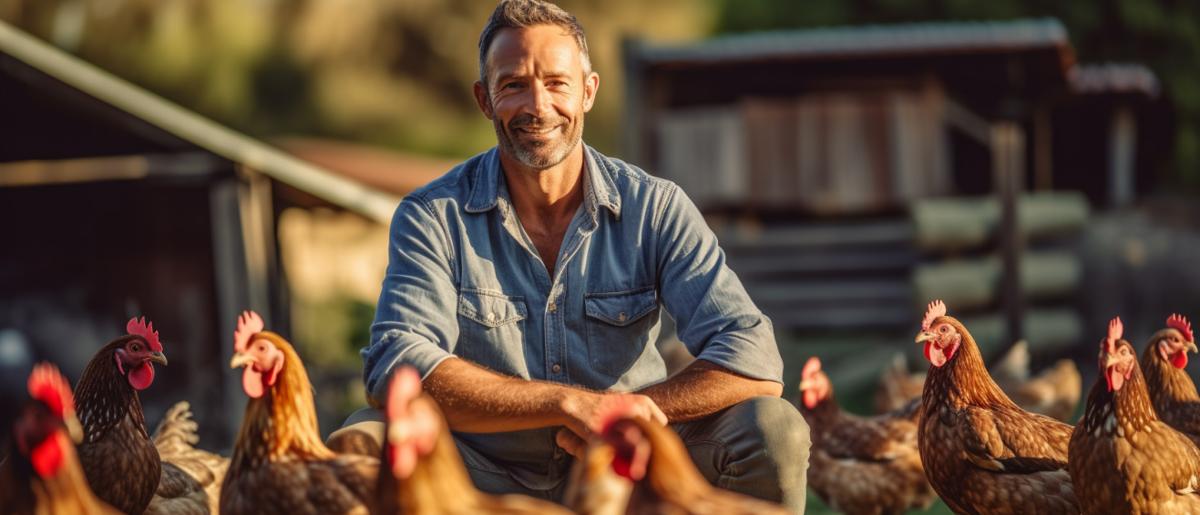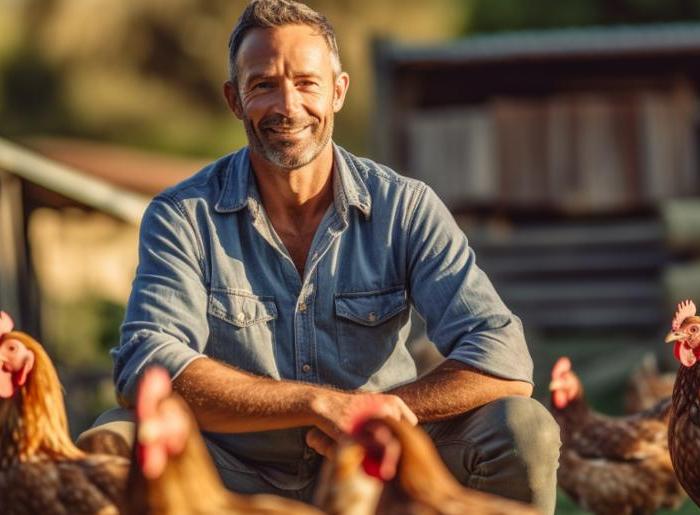

As a Poultry Farmer in Australia, you're not just managing a business, but also feeding the nation and contributing to a thriving agricultural sector. Just like any other industry, even poultry farming requires capital investment for things like equipment upgrade, property expansion, and meeting operational expenses. When savings or revenue aren't enough, that's where business loans come in handy. Securing essential funding through a business loan helps ensure your farm's uninterrupted operations; it can be a lifeline during challenging times or an enabler for growth and expansion. Whether to bridge cash flow gaps, invest in cutting-edge technology, or make it through unexpected hurdles, business loans provide that vital financial muscle to keep your poultry farm robust and productive. Hence, for Australian poultry farmers, business loans are not just an option, they're a tool for ensuring business resilience and operational continuity. With diverse loan options available in the market, finding the right one that aligns with your unique needs and circumstances is imperative. The right business loan can indeed make a significant difference to your agricultural enterprise.
Compare over 40+ lenders with one application.
In the agricultural sector, poultry farming holds a significant role, demonstrating its importance to Australia's economy. The nation's poultry farmers contribute directly to enriching our food supply chain by delivering high-quality eggs and poultry meat. The industry's versatility allows it to cater for diverse dietary requirements, with products ranging from organic to free-range and even speciality gourmet poultry. Beyond providing for the culinary needs of Australians, poultry farming benefits the community at a broader scale. An integral part of rural livelihoods, poultry farms often make up the backbone of local economies, particularly in regional and remote corners of the country. These enterprises provide local employment opportunities, fostering economic stability and growth within these communities. Australia's poultry farming is not just about the local market. On the international stage, the country's high standards for biosecurity and animal welfare mean that Australian-grown poultry and eggs are well-regarded and sought after overseas, boosting the country's export trade. Consequently, the value of poultry farmers in Australia reaches far beyond the farm gate. They are indispensable players in the local and global economies, ensuring consistent food supply, supporting rural economies, and contributing to international trade. Hence, the significance and value of poultry farmers within the fabric of Australia's agricultural industry cannot be overstated. Whether through local engagement, economic input, or international recognition, poultry farmers in Australia indeed play a crucial role.
Learn about eligibility and how to apply.
Poultry farming in Australia presents a unique set of hurdles that must be overcome for success. These challenges undoubtedly shape the resilience and adaptability of our nation's agricultural entrepreneurs. One of the most daunting challenges is the widespread and unpredictable climate variability. Australia's harsh and often erratic weather patterns lead to drought, heatwaves and flooding; each with severe impacts on poultry health, feed availability and farm infrastructure. Equally significant are the high operating costs associated with poultry farming. These comprise feed and equipment expenses, managing bio-security risks, and meeting strict animal welfare regulations. Regulations which are necessary, albeit expensive to uphold. Energy costs, too, for temperature control of sheds and light management, weigh heavily on operational budgets. Market competition further complicates matters. With the surge of cheaper, imported chicken meat flooding grocery aisles, it's increasingly challenging for Australian poultry farmers to maintain competitive domestic pricing without compromising the quality our nation's consumers deserve and expect. Lastly, there's the ever-present challenge of access to finance. Expanding operations, modernising equipment, or simply covering the cost of poultry farm maintenance often requires financial aid in the form of business loans. These challenges, while formidable, are not insurmountable. With the right resources and financial support, Australian poultry farmers are aptly equipped and unwaveringly committed to producing top-tier products whilst maintaining our country’s agricultural asset.
Calculate your repayment estimates and more.
In the demanding world of poultry farming, a business loan can serve as a lifeline, helping farmers navigate challenges and seize opportunities. Financial strain can restrict growth potential; a business loan helps remove this barrier, allowing farmers to expand livestock numbers, improve farm infrastructure or invest in advanced technology. This financial flexibility can empower poultry farmers to make strategic decisions, fostering innovation and growth. Farming equipment is key to efficient farming operations and, quite often, such machinery comes with a hefty price tag. A business loan can help poultry farmers acquire state-of-the-art equipment, from chicken coops to automated feeding systems, enhancing productivity and profitability in the long run. Right financing can also aid in maintaining an optimal inventory of supplies such as feed and vaccines, ensuring the welfare of the poultry is not compromised due to cost constraints. In the face of uncertain commodity prices and market fluctuations, a business loan can provide the much-needed financial cushion for poultry farmers. It can help them manage cash flow during off-peak seasons and safeguard the business against unexpected expenses. In essence, business loans equip poultry farmers with the financial resilience to overcome obstacles and capitalise on new opportunities as they continue to feed the nation.
For poultry farmers in Australia, several business loan options are available. These include, but are not limited to, line-of-credit loans for ongoing expenses, equipment financing for machinery purchases, and term loans for larger, long term investments. Each loan has its unique features and advantages catered to needs of the farming enterprise.
There are several types of business loans in Australia that can benefit Poultry Farmers. Each of these loan types has its unique features, advantages, and potential disadvantages. Here are some of the most common types of business loans for Poultry Farmers:
Working Capital Loans
These are designed to provide quick funds for immediate business expenses. Ideal for poultry farmers looking to cover short-term costs such as feed, veterinary expenses, or farm upkeep, working capital loans can be tailored to the unique needs of your operation.
Equipment Finance
Equipment finance helps farmers purchase necessary machinery, like hen houses or specialised poultry equipment, without out-of-pocket expense. Repayments can be structured to match your cash flow, preserving your capital for other farm needs.
Line of Credit
A revolving line of credit provides flexibility for unexpected costs or opportunities. This is particularly useful for poultry farmers who want access to funds, for instance, to expand broiler capacity or meet a surge in demand.
Bank Overdraft
This facility allows poultry farmers to access additional funds when their bank account balance runs low. This is beneficial for managing the variable expense profile linked to poultry farming, such as seasonal feeding costs.
Inventory Finance
Inventory finance can be used by poultry farmers to purchase necessary stock, like chicks, feed, or medicines. This prevents tying up your cash in inventory and frees up funds to be used elsewhere in your business.
Agribusiness Loans
Specific to agricultural ventures, these loans can be used for purchasing land, equipment, or livestock. They are customised to understand the unique cash flow patterns of farming businesses, including poultry farms.
Trade Finance
For poultry farmers looking to export their products, trade finance can provide the funds for the purchase of domestic goods for international markets.
Invoice Financing
This financial tool allows poultry farmers to borrow money against the amounts due from customers. It's ideal for farmers selling poultry products to businesses, helping to manage inconsistent cash flow.
Unsecured Business Loans
Unlike secured loans, unsecured business loans don't require collateral. This may be useful for poultry farmers who don't wish to leverage their land or equipment.
Terms Loans
Term loans offer a lump sum of cash upfront, which poultry farmers repay over a set period of time. These loans are useful for considerable one-time investments, such as expanding barn spaces, enhancing cooling systems, or upgrading egg collection mechanisms.
Poultry farmers in Australia can utilise business loans for various operational enhancements. They could invest in advanced farming equipment, expand their farm facilities to cater to a larger flock, or bolster their supply chain by ensuring efficient feedstock purchase. These upgrades help optimise productivity and profitability.
Here are some common reasons Poultry Farmers use business loans:
Poultry Housing Improvements
Reliable housing is crucial to maintain the health and productivity of the poultry flock. Business loans can facilitate upgrades to the physical structures, purchase of automatic feeding and drinking systems, and improvements in ventilation and heating systems.
Disease Management Solutions
Disease outbreaks can severely affect poultry production. Business loans can cover the costs of vaccination programmes, pest control, and enhanced biosecurity measures.
Flock Expansion
Business loans are often used to introduce new breeds or to expand the existing flock, thus increasing the overall production.
Feed Management
Quality nutrition is essential in poultry farming. A business loan can ensure a consistent supply of high-quality feed and also cover the costs of nutrient testing and diet optimisation.
Waste Management Systems
Effective waste management is important in maintaining flock health and sustainability practises. Loans can be used to instal innovative waste management systems.
Equipment Upgrades
From incubators to egg collection systems, business loans enable poultry farmers to make necessary equipment upgrades and replacements.
Training and Skills Improvement
Continual training of staff leads to better flock management. Business loans can cover costs of training programmes, workshops, or specialist consultations.
Marketing and Branding Initiatives
A strong brand presence can drastically improve sales. Business loans provide the funds necessary for marketing campaigns, product packaging, and online marketplace setup.
Sustainable Farming Technologies
Adapting sustainable practises can reduce operating costs and increase market value. Business loans can be used to purchase solar panels, water conservation systems, or implement organic farming practises.
Disaster Recovery
Poultry farms are susceptible to natural disasters. Business loans can serve as a contingency fund, helping to recover from flood, drought, or disease outbreak scenarios.
To estimate your monthly repayments and the total cost of the loan, input the loan amount, loan term and interest rate into the calculator below. This helps you plan your budget and choose the most suitable loan terms.
These helpful FAQs will help you find the answers you need. If you can't find what you're looking for, you can request a callback below.